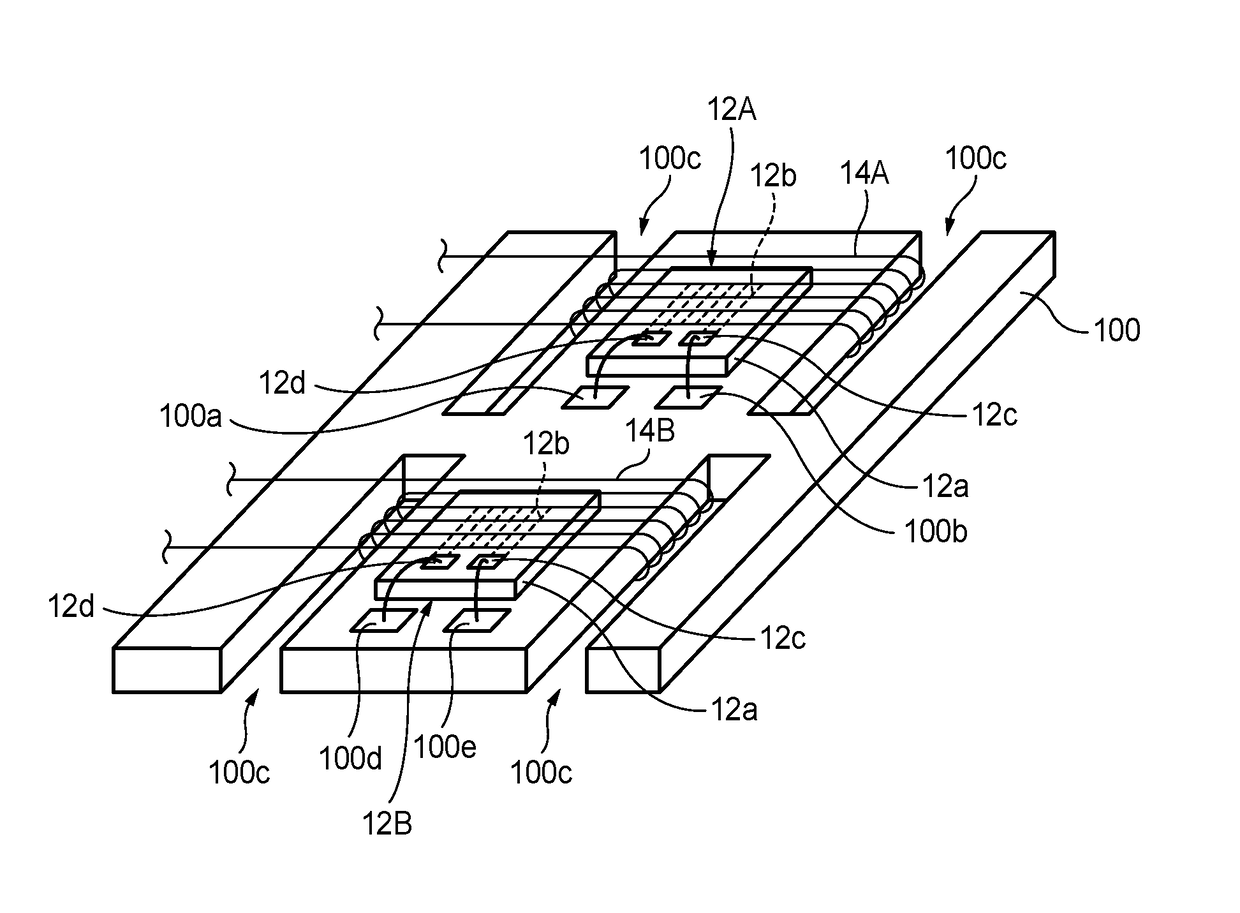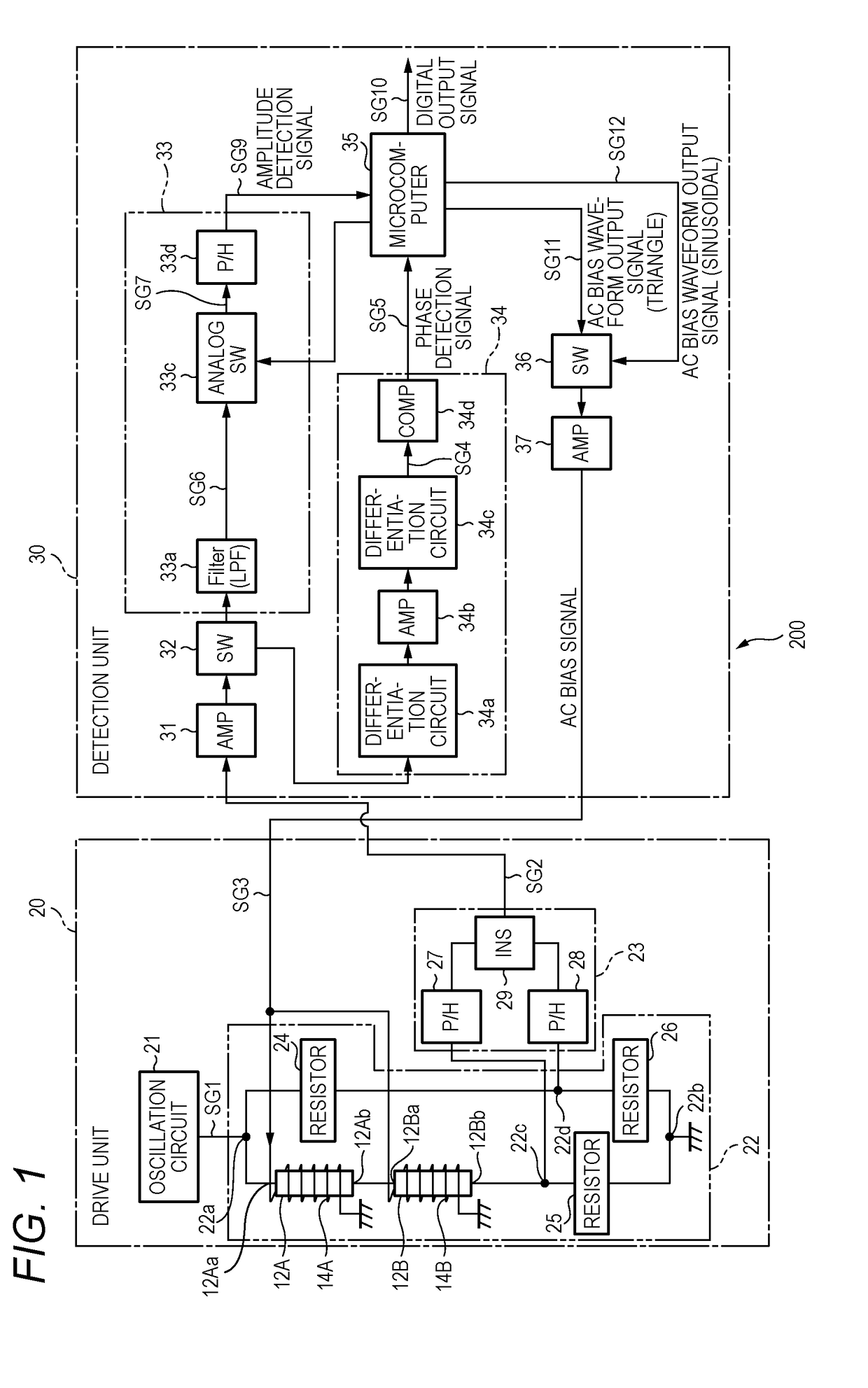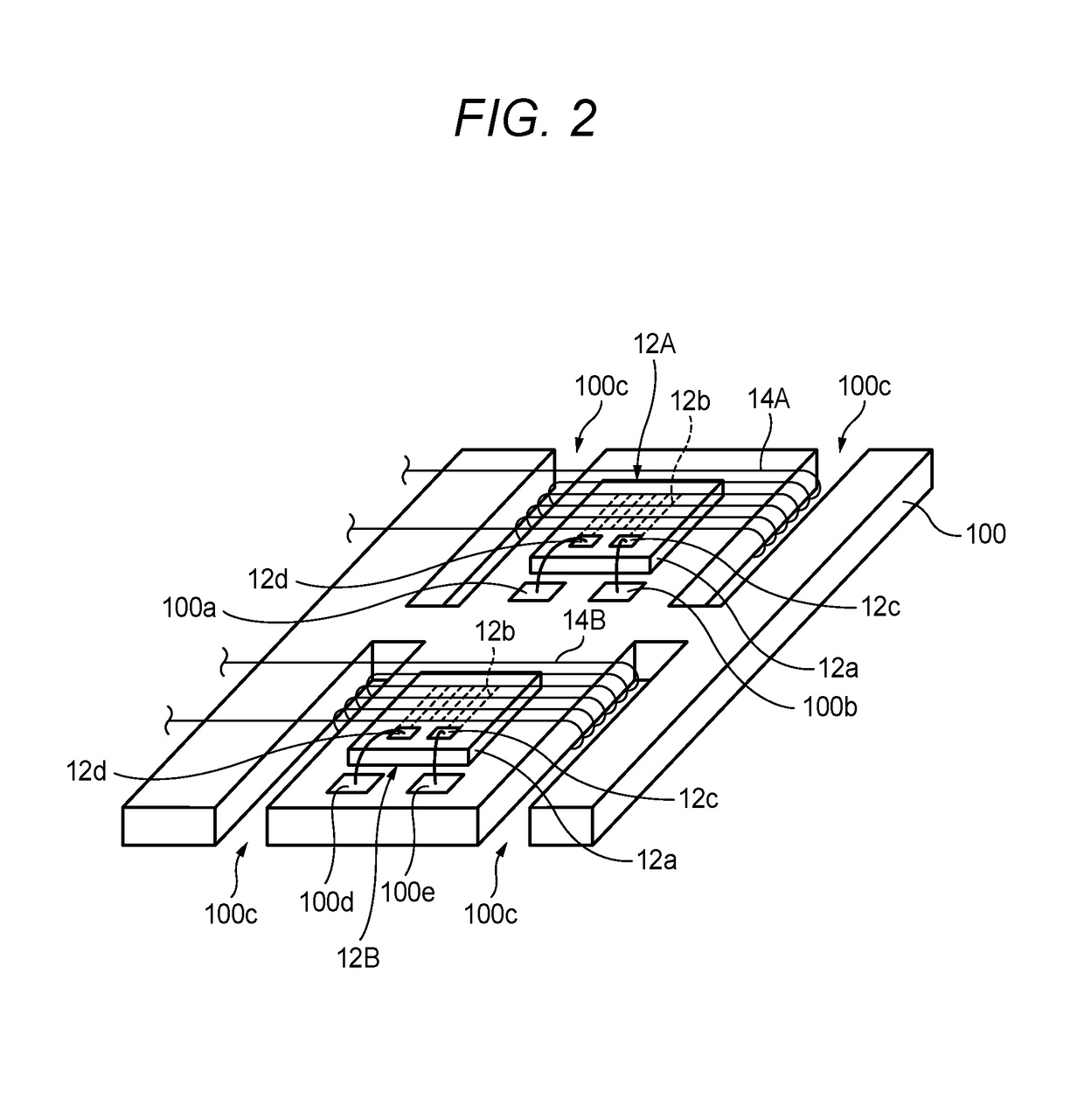Magnetic Field Detection Sensor
- Summary
- Abstract
- Description
- Claims
- Application Information
AI Technical Summary
Benefits of technology
Problems solved by technology
Method used
Image
Examples
Embodiment Construction
[0047]A specific embodiment of the present invention will be hereinafter described with reference to the drawings.
200>
[0048]FIG. 1 shows an example configuration of a magnetic field detection sensor 200 according to the embodiment of the invention.
[0049]The magnetic field detection sensor 200 shown in FIG. 1 is composed of a drive unit 20 and a detection unit 30. As described later in detail, each of magnetoimpedance elements 12A and 12B which are included in the drive unit 20 includes a magnetic member that exhibits the magnetoimpedance effect. The magnetic field detection sensor 200 detects an external magnetic field utilizing the two magnetoimpedance elements 12A and 12B.
[0050]The two magnetoimpedance elements 12A and 12B have different magnetism detection characteristics. More specifically, the magnetoimpedance element 12A has relatively high sensitivity and the magnetoimpedance element 12B has low sensitivity. That is, whereas the magnetoimpedance element 12A can detect a relat...
PUM
 Login to View More
Login to View More Abstract
Description
Claims
Application Information
 Login to View More
Login to View More - R&D
- Intellectual Property
- Life Sciences
- Materials
- Tech Scout
- Unparalleled Data Quality
- Higher Quality Content
- 60% Fewer Hallucinations
Browse by: Latest US Patents, China's latest patents, Technical Efficacy Thesaurus, Application Domain, Technology Topic, Popular Technical Reports.
© 2025 PatSnap. All rights reserved.Legal|Privacy policy|Modern Slavery Act Transparency Statement|Sitemap|About US| Contact US: help@patsnap.com



